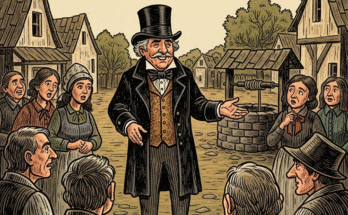Sports that are organised are great. They educate kids how to work together, be disciplined, be strong, and stick with things. These planned activities, like cricket games and football practice, make kids feel like they have a schedule and work towards their goals. But let’s be honest: with early morning rides, rigid coaching schedules, numerous carpool arrangements, and the always-there pile of gear (why does it constantly smell weird?), biking may sometimes feel more like a chore than a joy.
That’s when outdoor play, the kind that doesn’t have trophies, whistles, or timers, really shines. No referees, no scoreboards, and no need to wear a uniform. Just a gathering of excited youngsters, some open space, fresh air, and a crazy imagination coming together to make something new. Outdoor play is how many of us first learnt to be creative, active, and connected to other people. It could be a quick game of four-square or a long adventure in a backyard kingdom.
It’s easy to forget how important that kind of free play is in a world full of screens, classes, and competitive extracurricular activities. So let’s take a minute to remember and enjoy some of India’s most popular outdoor games. A lot of these games are passed down from one generation to the next and are played in tight gullies, schoolyards, and peaceful fields. Some are fast-paced, some require working together, and some are just plain ridiculous. But they all have one thing in common: they help youngsters grow in ways that can’t be taught in school or on the pitch.
What Are Outdoor Games, Exactly?
Outdoor games are activities that happen outside, in places like playgrounds, parks, courtyards, streets, backyards, or any other safe open space. A lot of the time, they don’t need pricey gear. They need space, energy, a little imagination, and some buddies.
Even though they may look like “just play,” these games have a lot of benefits. They are great for your physical health, brain sharpness, emotional strength, and even your social confidence. Outdoor sports are actually one of the most natural and effective ways for kids to grow up to be healthy and well-rounded people.
What Makes Playing Outside So Important?
Kids don’t only play outside to “burn off energy.” It’s about enriching their growth in ways that structured, inside activities sometimes can’t. Here’s why every child should have time for outdoor games:
1. It’s Good for Your Health
Running, jumping, climbing, avoiding, and balancing are all activities that build muscle, increase endurance, and improve coordination. Plus, being outside in the sun gives youngsters a good dosage of vitamin D, which is important for their bones and immune system to work well.
2. It encourages curiosity and a connection to nature.
Outside, kids are surrounded by living things like trees, birds, bugs, clouds, mud, and puddles. They begin to ask questions. “What’s that noise?” “Why do leaves drop?” “Can I use these sticks to make something?” This feeling of discovery can lead to a lifelong love of study and a greater appreciation for nature.
3. It helps you get better at talking to people and understanding your feelings.
Kids learn how to cooperate together, take turns, settle disagreements, and make rules as they play unstructured games. They learn empathy when someone falls, leadership when they lead a game, and resilience when they lose and try again. Every game of hide-and-seek and hopscotch has these lessons in it.
4. It Develops Focus, Independence, and Confidence
Playing outside helps kids pay attention better, especially those who have trouble paying attention inside. It also gives youngsters the chance to make their own choices and figure things out on their own, which boosts their confidence and helps them feel good about themselves.
20 or more great Indian outdoor games
India has a lot of traditional games that are easy to learn, fun to play, and full of thrill. Here are some old favourites:
1. Gilli Danda
This game is a mix of cricket and baseball. It employs two sticks: a longer one called a danda and a shorter one called a gilli. The player hits the gilli with the danda to send it flying, and then they try to run between the spots. It teaches how to work together, how to be on time, and how to react quickly.
2. Lagori (Seven Stones) or Pitthu Garam
Put seven stones in a stack, knock them down with a soft ball, and then rebuild the stack before the opposing team tags you. Teamwork, quickness, and strategy are what matter.
3. Kancha (Marbles)
People typically play this old game in the courtyards of their villages. Players try to hit and collect their opponents’ marbles with accurate flicks. It’s good for hand-eye coordination and being patient.
4. Kabaddi
Kabaddi is a mix of wrestling, tag, and breath control. One “raider” has to tag their opponents and go back to their side without being caught or taking another breath. It’s quite intense and physical.
5. Stapoo (Hopscotch)
Draw squares on the ground, throw a marker into one, and then jump through the grid, skipping the one with the marker. It’s easy, enjoyable, and a favourite with kids.
6. Bone and Dog
Two teams aim to collect something from the middle and bring it back to their side without getting tagged. It’s thrilling because you have to think quickly and move quickly.
7. Chain Chain
The “denner” tags other people, who then join hands to make a chain. The longer the chain, the harder it is to catch additional people. It’s a lot of fun, but it’s also a little chaotic.
8. Lattu (Twirling Top)
Put a string around a wooden top, throw it down with a flick, and see if you can keep it spinning. These can help kids learn some very cool tricks!
9. Maram Pitti (Dodgeball from India)
In a small space, players toss a rubber ball at each other and attempt not to get struck. The last person to stand wins.
10. Seek and Hide
Count, hide, and look for. It’s easy to play, keeps you on the edge of your seat, and you can play it over and over again.
11. Chor-Sipahi (Thief and Police)
A game where one group plays the “cops” and the other plays the “robbers.” Switch roles after each round.
12. Four Corners
Four players stand in corners, and while the others switch, the one in the middle tries to take a corner. A game of quickness and alertness.
13. Vish Amrit (Poison and Nectar)
Tagged players are frozen (poisoned) and can be brought back to life by their teammates. It emphasises teamwork and speedy decision-making.
14. Langdi
A game of tag that you play while hopping on one leg. Needs a lot of balance and stamina.
15. Aankh Micholi (Tag with a Blindfold)
One player is blinded and has to catch the others using only sound and instinct.
16. Kokla Chappaki
A circle game with singing and surprises where people pass around a piece of cloth. Who gets the cloth?
17. Posham Pa
A game where people pick a “prisoner” and sing. It’s usually played in groups of three or more.
18. Oonch Neech ka Papda
Players sprint between “high” and “low” levels of ground while the “denner” follows them based on where they are.
19. Kith-Kith
It is a different kind of hopscotch that is played in different parts of the world and tests your balance and agility.
20. Cars on the road
Kids pretend to be cars, people walking, and traffic cops. It’s a fun and useful approach to teach kids how to be safe on the road.
Why These Games Are Still Important
There’s a good reason why these old games have lasted over the years. They don’t just entertain; they also instruct. Here are some of the ways that playing these games might help you grow:
Physical Agility: Kabaddi and maram pitti are games that work out your whole body without you even knowing it.
Problem Solving: A lot of games demand you to make quick decisions, especially when the rules change during the game.
Team Spirit: Kids learn how to work together, help one other out, and respect their opponents, whether they win or lose.
Creativity: Kids may make stacks out of stones, games out of cloth, and tools out of sticks with little or no equipment.
Emotional Resilience: These games teach you how to lose gracefully, how to follow rules, and how to get back on your feet after a setback.
How to Get Your Kids Outside and Away from Screens
It can be hard to get youngsters to put down their devices and go outside, especially when they can play games on them with just a tap. But here are some tried-and-true ways to make the change easier:
1. Bring fun things to play with
A skipping rope, hula hoop, frisbee, or water balloons might often be all it takes to get people interested and moving.
2. Play a Game (for Real)
Set up an obstacle course in the backyard or race your youngster. They are more likely to become involved when play feels like a job.
3. Take the Indoors Outside
Make a reading corner outside or let them eat lunch under a tree. The more time they spend outside, the more likely they are to play without planning it.
4. Talk about your memories
Tell them about the games you played as a kid. Even better, show them one of your favourite things from when you were a kid. Nostalgia spreads and is fun!
5. Set aside time for “nothing.”
On weekends, leave time available when you don’t have any plans. Kids’ imaginations start to work when they’re bored, and that’s when genuine play starts.
Last Thoughts
Playing outside is more than just a fun way to pass the time; it’s also a way to learn and grow. Kids need time to run around, make up rules, scrape their knees, and figure out what they can do in a world full of devices and schedules. Traditional Indian games are a great way to interact with others, be creative, and learn about your culture. They are just as potent today as they were years ago.
When your child requests for screen time again, tell them to go outside with a stick, a stone, a spot of ground, and some pals. You could be giving them the best gift of all: the chance to be a kid.



